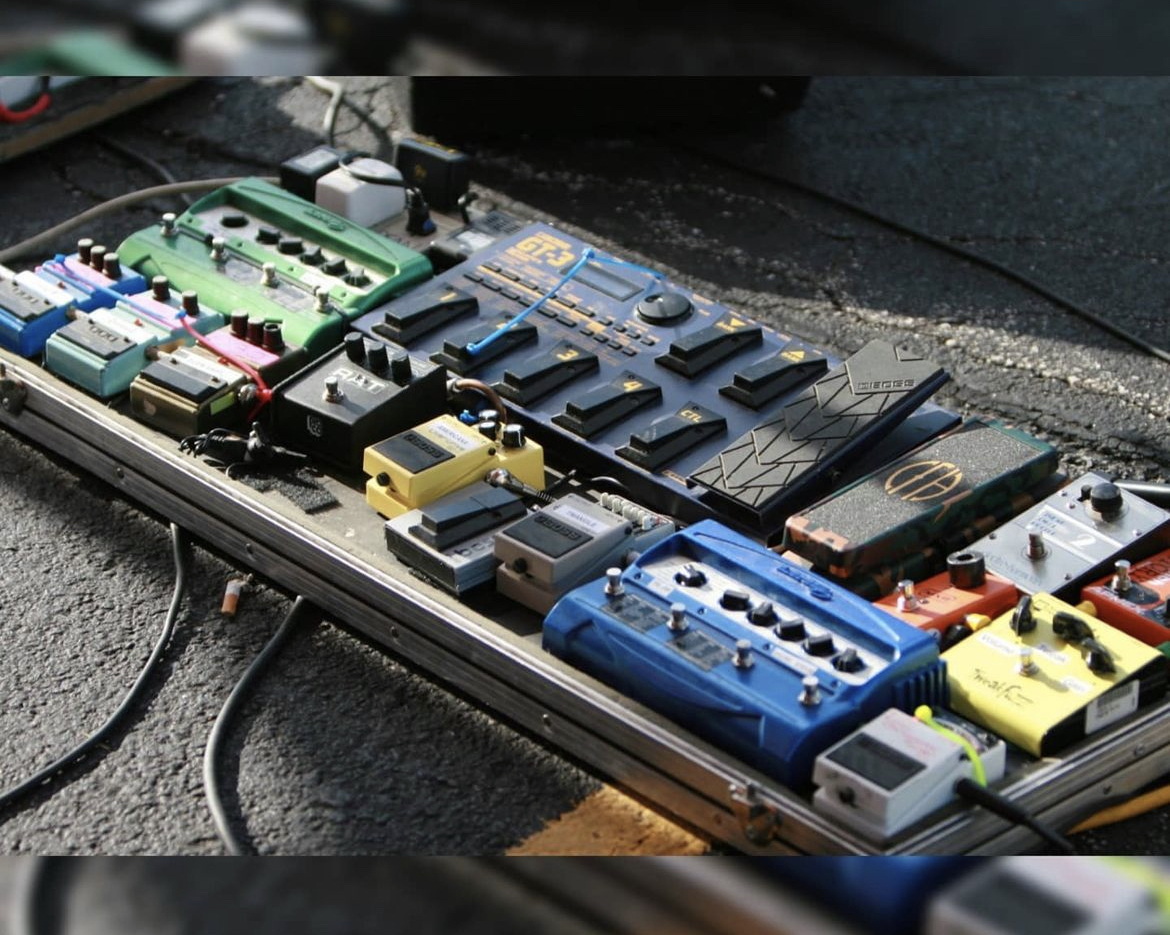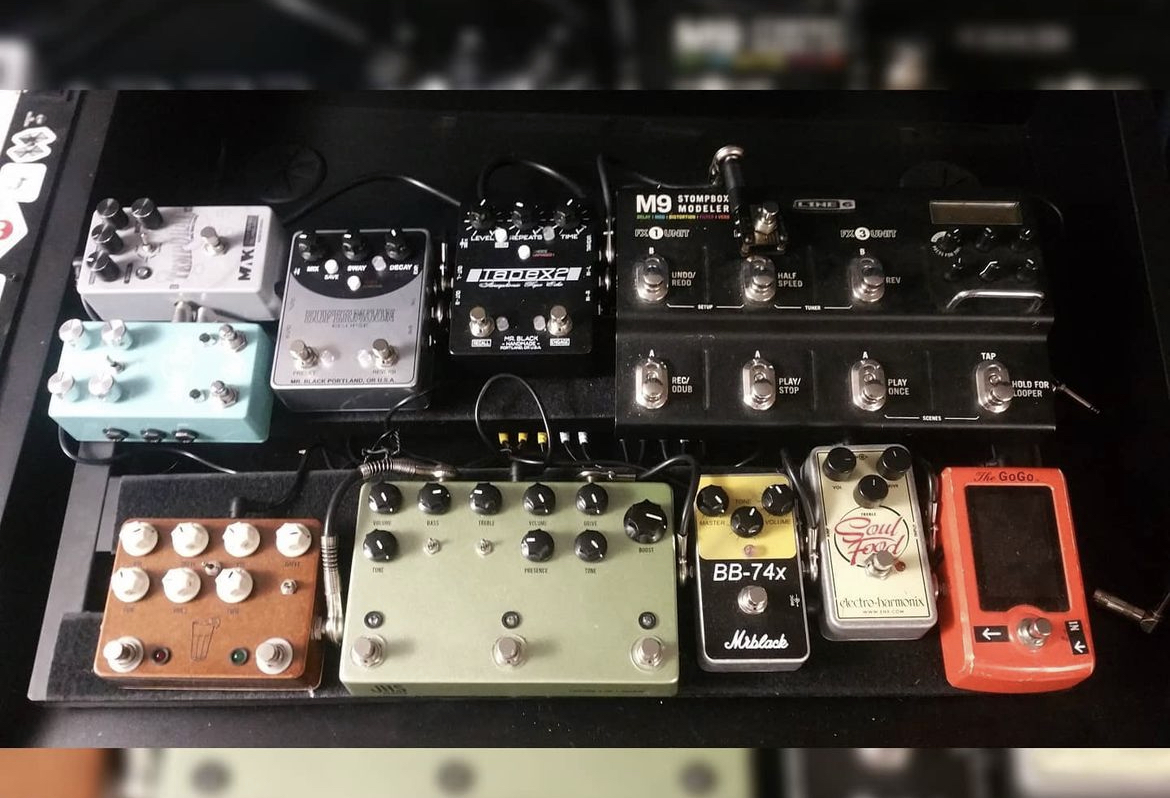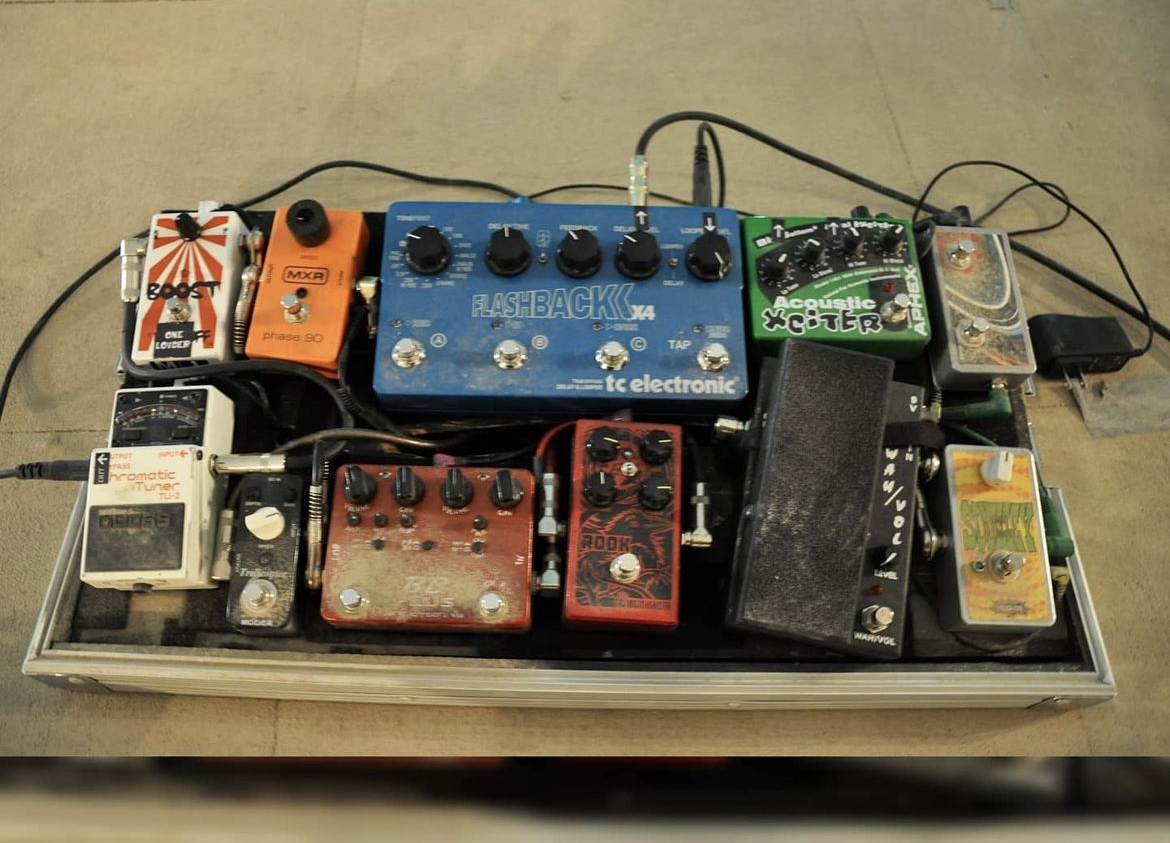Guitar Pedal Order
27th Oct 2022
Figuring out the order of your guitar pedals on your pedalboard can be exciting and also very confusing. The combinations and order are seemingly limitless. Many guitar players have very strong opinions as to what order you should place your pedals in.
Truth be told, there is no "right or wrong" order for your pedals. The effects world is an art, not a science. There are some guidelines you can follow in order to help you get the best tone. Generally speaking, effects that change the tone of your guitar should go at the start of your chain, while effects that modulate the frequencies go towards the end.
Of course, this is not a hard and fast rule. Lets jump in to the different types of pedals and discuss where they should go on your pedalboard.
Compression Pedals
Compressor pedals commonly control volume, tone, attack, and sustain. These are typically placed at the start of your chain or at the very end. Placing your compression pedal at the beginning will even-out the input signal. This will give you a tighter tone. Placing compression at the end of your chain will give you a more consistent level across all of your pedals.

Boost Pedals
A boost pedal provides an extra channel for your amp by increasing the volume level of the signal going in. These pedals are usually placed at the beginning of your chain as they can boost your fuzz or overdrive.
Overdrive Pedals and Distortion Pedals
An overdrive pedal will add gain to your electric guitar signal, causing it to break up or distort a bit (or more) depending on how much is used. A distortion pedal produces more gain and clips the signal even harder. These should come early in your pedal chain. These are often placed before fuzz pedals.

Fuzz Pedals
Scientifically speaking, a fuzz pedal alters your sound wave until it is almost square and adds overtones. You will want to place your fuzz pedal early in your chain in order to get the best sound. Fuzzes are often placed after boost, overdrive, and distortion for a richer tone.
Delay Pedals and Reverb Pedals
Delay pedals will create a copy of your signal and play it back. Reverb pedals will create a "live" sound by emulating sound waves bouncing off surfaces. These are typically placed in the middle or towards the end of your chain. Reverb pedals are often found at the very end of the chain of however, sometimes there can be a modulation effect after it.
Modulation Pedals
Because modulation pedals have different effects (chorus, tremolo, phaser, flanger, and uni-vibe), they can go in different parts of your chain. Generally speaking, modulation pedals will be placed at the very end of your chain. Phaser and flanger pedals are sometimes placed before distortion for a natural sound.

Equalizer Pedals
An equalizer (EQ) pedal allows you to boost or cut gain in a particular frequency for your electric guitar. It allows you to take a sound that you already like and shape it more specifically for your application. These are often placed after your distortion
Wah Pedals
A wah pedal, also known as a wah-wah pedal, alters the tone and frequencies of your electric guitar to give it the distinct sound of someone saying "wah wah." These are often placed before distortion and at the beginning of your chain to create the best "wah" sound. For a more sweeping tone, you can place your wah after your gain effects.
As we mentioned, there really is no right or wrong place to put your effects. Be sure to experiment with your setup to get the tone that you are looking for.
If you still have questions about where to best place an effect in your signal chain, etc please connect with us via the chat feature on our site, via email or over the phone. We'd love to help you out!
